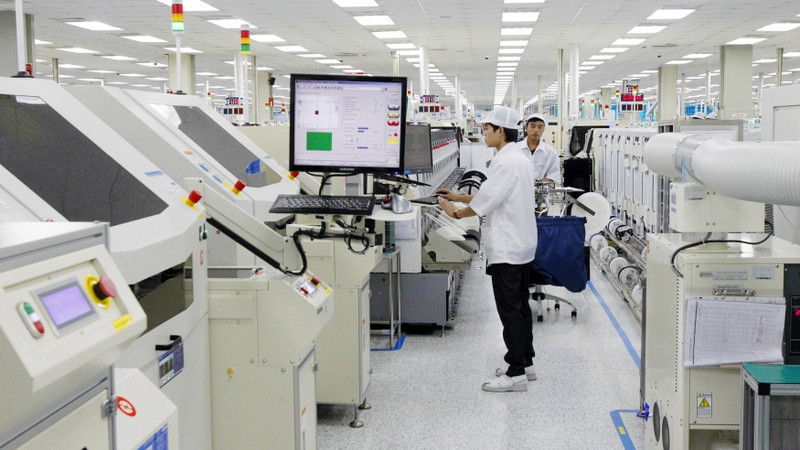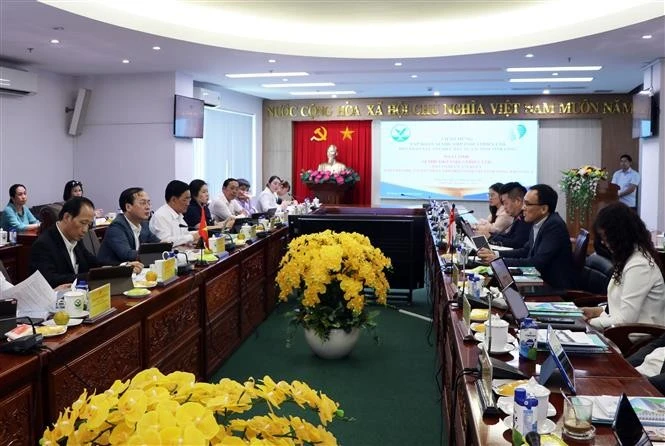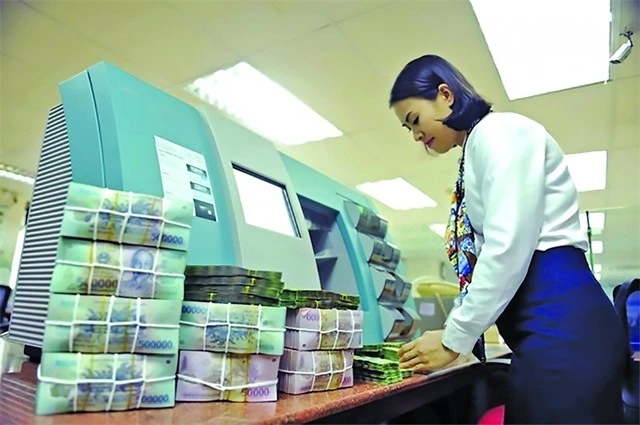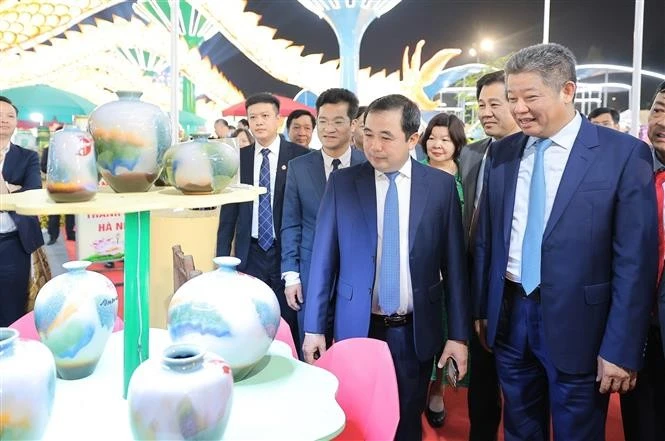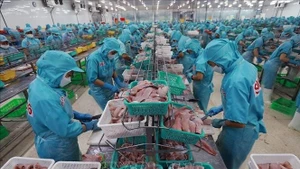Over the past few years, Samsung, hailing from the Republic of Korea, has become a good example of a multinational corporation (MNC) in Vietnam supporting the country in climbing the global value chain (GVC).
Having been operating in Vietnam for 13 years, Samsung has raised its investment capital from an initial US$670 million to US$17.5 billion, with six plants in the northern provinces of Bac Ninh and Thai Nguyen, and in Ho Chi Minh City, and an under-construction research and development (R&D) centre worth US$220 million in Hanoi.
In 2020, Samsung Vietnam earned US$67 billion in revenue, accounting for 25% of the country's GDP of US$270 billion. Samsung Electronics' Thai Nguyen arm contributed the most revenue among the four subsidiaries, at US$26 billion last year.
Also last year, Samsung Vietnam posted some US$57 billion in export revenue - or nearly 20% of Vietnam's total export turnover - a little below its target of US$60 billion, but still a positive result amid the pandemic
Big role
According to the Ministry of Planning and Investment, the great contributions of such firms as Samsung to Vietnam's economic growth are significant. The country's economy grew 2.91% last year, and 4.48% in the first quarter of 2021.
The Vietnamese government has always underlined the major role of foreign direct investment (FDI) in spurring its exports via global value chain (GVCs) participation, as well as boosting economic growth.
In the first five months of this year, total newly-registered and newly-added FDI capital was nearly US$14 billion, up 0.8% over the corresponding period last year.
FDI disbursement from January to May 20 is estimated at US$7.15 billion, an increase of 6.7% as compared to the same period of 2020.
Manufacturing was the most attractive sector in Vietnam, attracting US$6.14 billion in FDI in five months.
According to a recent study by the ASEAN+3 Macroeconomic Research Office (AMRO), as the biggest foreign direct investor in Vietnam, it is not surprising that Samsung has a sizeable influence on the way Vietnam participates in GVCs, particularly in terms of backward linkages. Prior to 2019, among around 100 of Samsung's suppliers who collectively accounted for 80% of its transaction volume, 28 were listed as operating in Vietnam, although these appear to be foreign-owned. More than half were based, or had operations, in the Republic of Korea, 30 in China, and 16 in Japan.
This sourcing breakdown is largely consistent with Vietnam's top imports from the Plus-3 economies, also mostly electronic in nature. In particular, these are mostly intermediate goods such as semiconductors and electronics.
As Vietnam continues to be a highly attractive production base for other multinationals, the influx of these new MNC projects will also help shape its future GVC participation. For example, the media reported Apple shifting nearly 30% (up to four million units) of its wireless headphones production (AirPods) into Vietnam and away from China. As a result, its leading supplier Goertek also confirmed plans to move its production in the same direction.
Google is also reportedly looking at moving to Vietnam from China for its Pixel 4A smartphone.
These investment movements will have a significant impact on how the foreign and/or domestic value added content of electronics and electrical exports will change in the future.
Similarly, the ongoing movement of international footwear and apparel firms such as Adidas, Nike, and Puma to Vietnam will also influence the backward linkages of the equally-significant garments sector.
A rise in GVCs
Vietnam has seen many impressive economic achievements over the past two decades. Since Doi moi launched in 1986, Vietnam has actively opened up its economy, participating in the regional economic cooperation in 1995 and joining the World Trade Organization in 2007.
Such transitions have helped the economy maintain rapid growth of around 7% since the early 2000s, except during the 2008-2009 global financial crisis (GFC) and the 2011-12 domestic financial turbulence. In particular, amid a general slowdown of emerging markets in the post GFC period, Vietnam has maintained its strong growth momentum, and more recently, has seen an explosive growth in exports amid strong FDI.
According to AMRO, Vietnam's exports have diversified and grown exponentially over the past two decades. Vietnam's gross good exports reached US$264.2 billion in 2019, a 48-times increase in 25 years from the figure of US$5.5 billion in 1995 when it joined ASEAN.
During these two decades, Vietnam's exports have become more diversified and sophisticated. From the 1990s through to the first half of 2000s, primary products, such as food and mineral fuels, accounted for more than half of total exports. From the early 2000s, miscellaneous manufactured goods, such as textiles and clothing, began to increase their contribution to Vietnam's exports. And since 2013, the share of machinery, transports and equipment - in particular mobile devices - in total exports, has grown exponentially and exceeds other manufactured and primary products.
In terms of end-use, Vietnam's exports comprise mainly intermediate and final consumption goods, while mixed end-use and capital goods having grown in prominence recently.
The Ministry of Industry and Trade reported that in 2020, Vietnam's total export-import turnover hit US$545.36 billion, up 5.4% year-on-year. Of which, export turnover reached US$282.65 billion, up 7% or US$18.39 billion, and import turnover sat at US$262.7 billion, up 3.7% or US$9.31 billion.
In the first five months of 2021, the nation's total export-import turnover is estimated to have hit US$262.21 billion, including US$130.94 billion from exports - up 30.7% year-on-year, and US$131.31 billion from imports - up 36.4% year-on-year.
"FDI has played an important role in the rapid growth of exports," said AMRO in its recently-published report titled "The role of Vietnam's FDI inflows in global value chains participation and economic growth".
"Since Samsung Electronics' large investments in Bac Ninh in 2007, Vietnam has emerged as a major final assembly hub for ICT hardware and electronic related products," said the report.
According to the World Bank Group (2017), about 80% of electronics/ ICT hardware and over 30% of electronic-related products produced in Vietnam are destined for export markets, and mostly manufactured by foreign firms.
Growing interest in Vietnam as a production base has led to strong FDI inflows, particularly in the manufacturing sector. For example, as of May 20, 2020, FDI-led manufacturing can be found in 15,323 valid projects, registered at US$232.78 billion - accounting for 45.58% and 58.65% of the total number of foreign-invested projects and registered FDI in Vietnam, respectively.
Additionally, FDI in higher value-added non-manufacturing sectors has increased recently too, in particular in professional, scientific and technical activities, which will help improve
Vietnam's business environment and total factor productivity going forward.
However, AMRO said that amid the post-pandemic GVC reconfiguration, FDI policies need to be carefully aligned to Vietnam's development strategy.
Vietnam appears to have successfully weathered the COVID-19 pandemic's impact on trade and investment activities. Realising the vulnerabilities of the existing supply chain network, several multinational companies, especially those in electronics and textiles businesses, are now moving or diversifying their production facilities to Vietnam and other ASEAN countries, which could further strengthen Vietnam's GVC participation.
"Amid this re-configuration of global supply chains, there should be scope for Vietnam to take advantage of these ongoing changes to propel itself up the production value chain with greater domestic companies' participation," said the report. "Additionally, recent increases in FDI in the service sector, such as in ICT, telecommunications, retails, and financial intermediation, could provide new opportunities for Vietnam to participate in the higher value tiers of GVCs. A deliberate strategy to attract FDIs open to engaging domestic firms in providing intermediate inputs would be needed to complement policies to develop and support domestic suppliers."
